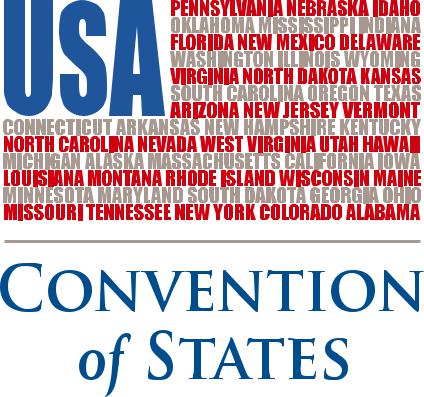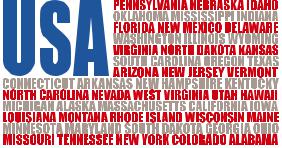This is an old revision of the document!
Article_18-DemystifyingDustyTool
It’s time to dust off the tool the Founders gave us in Article V.
The Article V Solution — Demystifying a Dusty Tool
Rita Dunaway, Esq., National Legislative Strategist for the Convention of States Project
Perhaps the most unifying conservative trait is the conviction that our Founding Fathers designed an ingenious federal sys-tem that we ought to conserve. But as federalism lies dying and our society spi-rals toward socialism, there is dissension among conservatives about using the pro-cedure the Founders left to the states to conserve it.
Because Article V’s amendment-propos-ing convention process has never been used, some have branded it a mystical and dangerous power — a thing
shrouded in mystery, riddled with unan-swerable questions, and therefore best left alone. Some have literally labeled it a “Pandora’s Box,” the opening of which would unleash all manner of evil upon our beleaguered nation.
Article V opponents accuse proponents of being reckless with the Constitution. They say we have no idea how a convention would work, who would choose the dele-gates, how votes would be apportioned, or whether the topic of amendments could be limited.
My task today is to remove the shroud of mysticism by revealing what we do know about an Article V convention from its text, context, historical precedent, and simple logic.
For starters, we know that the Founders’ whole purpose for including the conven-tion mechanism was to provide a way for the states to bypass Congress in achieving needed constitutional amendments.
An early draft of Article V vested Congress with the sole power to propose constitu-tional amendments. Under that version, two-thirds of the states could petition Congress to propose amendments, but it was still Congress that did the proposing. On Sept. 15, 1787, George Mason strenu-ously objected to this, pointing out that such a system provided no recourse for the states if the national government should become tyrannical, as he predicted it would do.
The result was the unanimous adoption of Article V in its current form, providing two ways for constitutional amendments to be proposed: Congress can propose them, or the states can propose amendments at a convention called by Congress upon application from two-thirds, or 34, of the states. Regardless of which body proposes the amendments, proposals must be rati-
Continued to back page
The “unanswerable”
questions about
Article V do have
answers.
Continued from front page
fied by three-fourths, or 38, of the states in order to become effective.
We also know from history that voting at an Article V convention would be done on a one-state, one-vote basis. This is the universal precedent set by the 32 inter-state conventions that occurred prior to the Constitution’s drafting. It explains why it was unnecessary for Article V to specify the number of delegates to be sent by each state; the states can send as many delegates as they like, but each state only gets one vote.
We know that state legislatures choose and instruct their convention delegates, who act as agents of the state legislatures. Again, this is a matter of universal histori-cal precedent for interstate conventions.
On Nov. 14, 1788, the Virginia General Assembly filed the very first application for
an Article V Convention to propose a Bill of Rights, aptly branding the convention “a convention of the States” to be composed of “deputies from the several States.”
Because Congress ultimately used its own Article V power to propose a Bill of Rights, that meeting was rendered unnecessary. But the application demonstrates the con-temporaneous understanding that the convention process was state-led. The Supreme Court has likewise referred to the process as a “convention of states.”
Finally, we know that the topic specified in the convention applications does matter. Over 400 applications for an Article V convention have been filed since the draft-ing of the Constitution. The reason we have never had one is because there have never been 34 applications seeking a con-vention for the same purpose. The state applications contain the agenda for an Article V convention, and until 34 states
agree upon a convention agenda, there will be no convention.
Because the authority for an Article V con-vention is derived from the 34 state applications that trigger it, the topic for amendments specified in those applica-tions is a binding limitation on the scope of the convention.
The “unanswerable” questions about Arti-cle V do have answers. The unshrouded Article V convention isn’t a Pandora’s Box at all, because there is no such thing as magic in a box for us to fear—there is only history, law, and reason to guide faithful Americans in tending their government. And precisely because there is no such thing as magic, we’re going to need an effective tool to do the hard work of restoring our Republic.
It’s time to dust off the tool the Founders gave us in Article V and get started.
Originally published on TheBlaze.com
(540) 441-7227|CONVENTIONOFSTATES.COM|Facebook.com/ConventionOfStates|Twitter.com/COSproject








